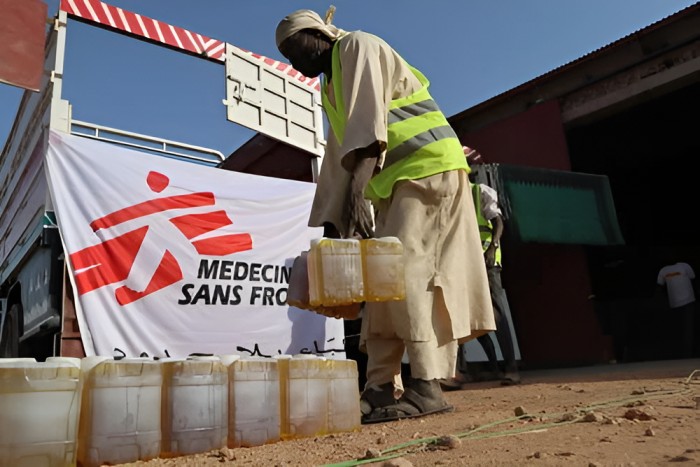As conflict rages in Sudan, South Darfur is facing a worsening malnutrition crisis, with displaced families struggling to meet their basic needs.
Médecins Sans Frontières (MSF) teams working on the ground are witnessing the deepening humanitarian crisis firsthand as thousands face hunger, with little outside help available.
Children under five years old, along with pregnant and breastfeeding mothers, are among the hardest hit.
In 2024 alone, MSF admitted more than 7,200 young children and women from Nyala and nearby areas into its outpatient feeding programmes after they developed severe acute malnutrition—a life-threatening condition if not treated.
The lack of sufficient humanitarian aid, including limited support from UN agencies, has left huge gaps in services, especially for treating malnutrition.
Though MSF launched emergency nutrition support in some of the worst-affected areas, teams are under immense pressure to expand and maintain their efforts as needs continue to grow.
As part of MSF’s outpatient feeding programmes, those enrolled are given therapeutic food to take home.
However, after seeing families divide the therapeutic food among all household members, MSF began distributing food parcels for entire families in December.
"In order to reduce instances where the child's therapeutic food is divided amongst the hungry relatives, we provide a family ration for a duration of two months," says Hunter McGovern, MSF’s food distribution coordinator in South Darfur.
"This allows the child to receive the full course of their nutrition therapy while increasing the nutrition situation of the whole family. Even with this activity in progress, the needs remain overwhelming."
Each food ration provides 2,000 calories per day for an average of five family members, covering a two-month period.
This strategy aims to stabilize the whole household’s nutrition, ensuring that malnourished children and pregnant and lactating women receive the full benefit of the therapy.
However, the need is far greater than initially planned.
"During our distributions, we found that the average family size is much larger than what we had initially planned for—sometimes as many as ten people per household. This underscores just how critical the food shortage is and how much more assistance is required to meet the real needs of people," says McGovern.
Word of food distributions spreads quickly, with people often traveling long distances after hearing that relatives received help, underlining the desperate hunger situation.
With the rainy season fast approaching, the challenges are expected to worsen.
The rainy period makes it extremely difficult to transport food and medical supplies, cutting off many communities from essential aid.
MSF warns that immediate action is needed to pre-position supplies for malnutrition treatment and food distribution before roads become impassable.
Local responders urgently need funding and logistical support to expand their programmes and reach more people before the worst conditions set in.
Running food distributions and expanding feeding programmes is difficult under current conditions, but it remains possible and critical to prevent further suffering and deaths.
Without a rapid increase in humanitarian support, food insecurity will deepen, malnutrition rates will continue to climb, and countless lives in South Darfur will be put at even greater risk.

